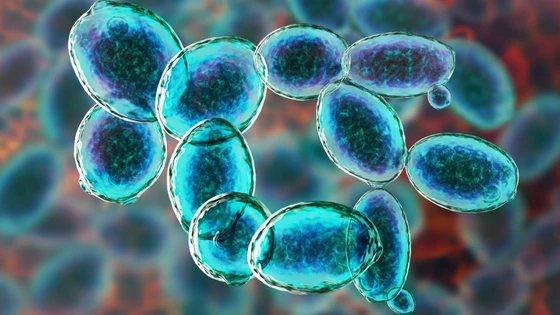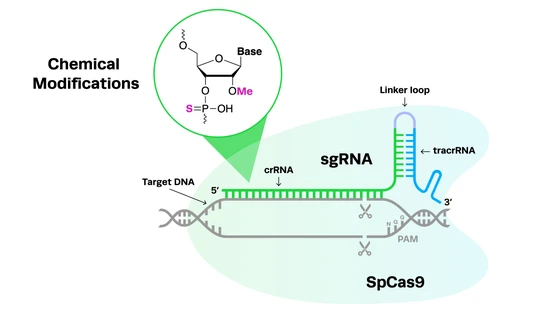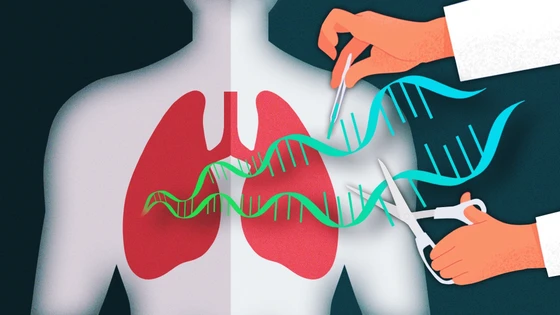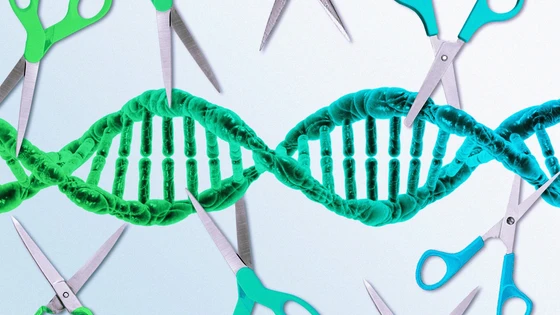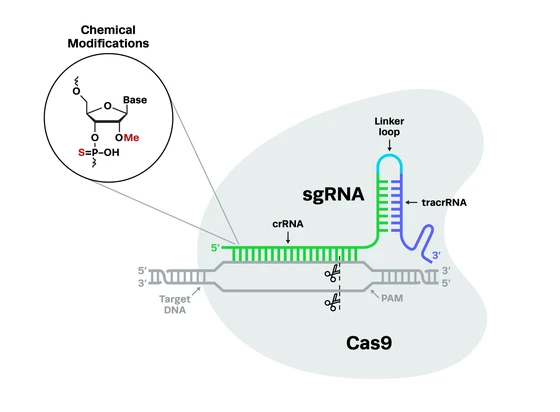Over the last few decades, the budding yeast Saccharomyces cerevisiae has become increasingly popular as a model system for studying eukaryotic functional genomics and metabolic pathways and for the bioproduction of a wide range of industrial products. Since it’s discovery, CRISPR-Cas9 has quickly become the genome-editing technology of choice for genome engineering in yeast as well as other organisms, due to its efficacy and versatility.
In this article, we will learn about yeast biology and the role it plays as a model organism in CRISPR research. Specifically, we will cover the following topics:
Why is Yeast Important for Scientific Research?
Since ancient times, the budding yeast Saccharomyces cerevisiae has been used for the production of alcohol and bread. However, in the last few decades, as scientists have gained more understanding of yeast biology, it is increasingly being used for research purposes. In the next few sections, we will discuss why it has become an important model organism for research.
Yeast biologyYeast is a eukaryotic organism, which means that its cells have a nucleus containing DNA enclosed within a membrane. This sets it apart from prokaryotes such a bacteria which do not contain membrane-bound organelles. Being a unicellular organism, it is one of the simplest eukaryotes available for research. This makes genetic manipulation cost-effective and easy compared to other complex eukaryotes such as mice or zebrafish.
Metabolic pathways occurring in humans can be studied in using yeast. It’s cells also divide in a similar way as the human cells, making it a model organism for biological research.
Yeast is a eukaryotic organism, which means that its cells have a nucleus containing DNA enclosed within a membrane. This sets it apart from prokaryotes such a bacteria which do not contain membrane-bound organelles. Being a unicellular organism, it is one of the simplest eukaryotes available for research. This makes genetic manipulation cost-effective and easy compared to other complex eukaryotes such as mice or zebrafish.
Metabolic pathways occurring in humans can be studied in using yeast. It’s cells also divide in a similar way as the human cells, making it a model organism for biological research.
Decoding the Saccharomyces cerevisiae genomeS. cerevisiae, also known as baker’s yeast, was the first eukaryotic organism whose complete genomic sequence was determined in 1996. Since then, scientists have discovered that at least 20 percent of human genes that play a part in disease have counterparts in yeast, making it a model organism for understanding diseases at a basic cellular level. For these research purposes, genetic modification of yeast is necessary to study gene functions.
In the next sections, we will discuss how CRISPR is playing an important role in the genetic manipulation of this tiny organism.
S. cerevisiae, also known as baker’s yeast, was the first eukaryotic organism whose complete genomic sequence was determined in 1996. Since then, scientists have discovered that at least 20 percent of human genes that play a part in disease have counterparts in yeast, making it a model organism for understanding diseases at a basic cellular level. For these research purposes, genetic modification of yeast is necessary to study gene functions.
In the next sections, we will discuss how CRISPR is playing an important role in the genetic manipulation of this tiny organism.
Genetically Engineered Yeast: A Model Organism for CRISPR Research
Ever since the discovery of CRISPR-Cas9 technology for genome editing, it has quickly become the method of choice for the genetic manipulation of yeast. Studies involving CRISPR and yeast have provided researchers with important information about eukaryotic gene function, protein pathways, and production of various industrial products. In this section, we will discuss some important studies that have used yeast as a model organism for CRISPR research.
1. CRISPR-Cas9: Yeast genes knocked out with single point precisionA team of researchers from the University of Illinois recently used CRISPR-Cas9 technology to target any gene in S. cerevisiae and turn it off by deleting single letters from the DNA sequence. Their technique, named CRISPR-Cas9 and homology-directed-repair assisted genome-scale engineering (CHAnGE) allows researchers to study the function of each gene individually or in combination with other genes.
Understanding the yeast genome and optimizing it to produce new strains is particularly beneficial for industrial applications of yeast such as production of ethanol, lubricants, and other chemicals.
A team of researchers from the University of Illinois recently used CRISPR-Cas9 technology to target any gene in S. cerevisiae and turn it off by deleting single letters from the DNA sequence. Their technique, named CRISPR-Cas9 and homology-directed-repair assisted genome-scale engineering (CHAnGE) allows researchers to study the function of each gene individually or in combination with other genes.
Understanding the yeast genome and optimizing it to produce new strains is particularly beneficial for industrial applications of yeast such as production of ethanol, lubricants, and other chemicals.
2. Modulating CRISPR-Cas9 gene drives in Saccharomyces yeastControlling biological populations is an important issue being considered in many fields today, including pest and disease control, agriculture and ecological preservation. The CRISPR-based gene-drives have recently caught the attention of researchers for these applications. There have already been studies that have used CRISPR gene drive to nearly eliminate insect populations.
In a recent study, researchers from the Kansas State University used S. cerevisiae as a safe and fully contained model system to investigate mechanisms for programmed regulation of gene drive activity.
Controlling biological populations is an important issue being considered in many fields today, including pest and disease control, agriculture and ecological preservation. The CRISPR-based gene-drives have recently caught the attention of researchers for these applications. There have already been studies that have used CRISPR gene drive to nearly eliminate insect populations.
In a recent study, researchers from the Kansas State University used S. cerevisiae as a safe and fully contained model system to investigate mechanisms for programmed regulation of gene drive activity.
3. Using CRISPR-Cas9 to fuse yeast chromosomes and produce new strainsIn this study, scientists used CRISPR-Cas9 to fuse yeast chromosomes, generating a near-isogenic series of strains with progressively fewer chromosomes. They then crossed a 16-chromosome strain with other strains having fewer chromosomes and noticed the following:
- The spore viability decreased significantly when the number of chromosomes dropped below sixteen.
- When the number of chromosomes decreased below twelve, yeast sporulation was arrested.
The researchers also noticed that homotypic crosses between pairs of strains with 8, 4, or 2 chromosomes produced great sporulation and spore viability. This demonstrates that S. cerevisiae tolerates a reduction in chromosome number quite well.
In this study, scientists used CRISPR-Cas9 to fuse yeast chromosomes, generating a near-isogenic series of strains with progressively fewer chromosomes. They then crossed a 16-chromosome strain with other strains having fewer chromosomes and noticed the following:
- The spore viability decreased significantly when the number of chromosomes dropped below sixteen.
- When the number of chromosomes decreased below twelve, yeast sporulation was arrested.
The researchers also noticed that homotypic crosses between pairs of strains with 8, 4, or 2 chromosomes produced great sporulation and spore viability. This demonstrates that S. cerevisiae tolerates a reduction in chromosome number quite well.
Applications of CRISPR in Yeast: Wine Production, Biofuels, Biopharmaceuticals, & more
Both conventional and non-conventional yeasts play an important role as cell factories for the production of food additives, biochemicals, biofuels, and proteins. We will discuss a few of these applications and how CRISPR is helping to optimize and improve these industrial processes below.
1. Using CRISPR to genetically modify beer & wine yeast
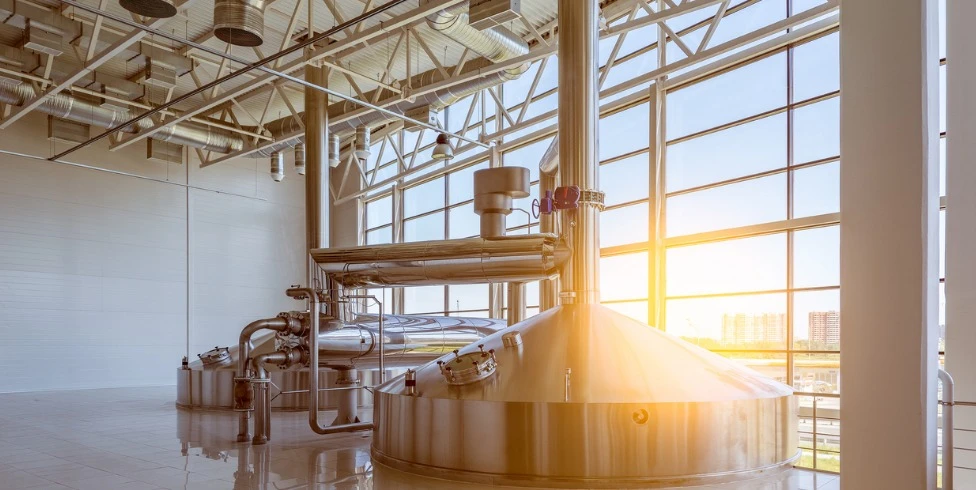
A team of scientists from Belgium, recently identified the yeast genes that impart a distinct rose flavor to some wines. By using CRISPR to tinker with these genes, they were able to produce wines with superior rose flavor. Similarly, beer with a more distinct honey flavor can also be produced using these modified organisms.
Want to drink wine without worrying about a hangover? A team of Scientists from the University of Illinois is working on a project that they can make this happen using CRISPR-edited yeast.
2. CRISPR protects yeast during biofuel productionYeast plays an important role in the fermentation of the sugars to biofuels. During this process, pre-treatment chemicals are often used to speed up cellulose breakdown. However, these chemicals are potentially toxic to these organisms. Researchers have now found a way to protect them from damage during the biofuel production process using CRISPR. A team of scientists made two changes to a single gene such that yeast is now tolerant to these pre-treatment chemicals.
Yeast plays an important role in the fermentation of the sugars to biofuels. During this process, pre-treatment chemicals are often used to speed up cellulose breakdown. However, these chemicals are potentially toxic to these organisms. Researchers have now found a way to protect them from damage during the biofuel production process using CRISPR. A team of scientists made two changes to a single gene such that yeast is now tolerant to these pre-treatment chemicals.
3. CRISPR-edited yeast for biopharmaceutical and industrial applicationsS. cerevisiae in specific is popularly used for cell factories. A team of scientists recently developed a Cas9/dCas9 based system––SWITCH, which as the name suggests allows the yeast to iteratively alternate between genetic engineering and a pathway control states. They used SWITCH for the production of a flavonoid precursor naringenin.
Apart from S. cerevisiae, CRISPR is also being used to engineer Kluyveromyces marxianus––a probiotic yeast that plays an important role in industrial applications. Researchers have now used CRISPR-Cas9 system to create stable haploid strains of K. marxianus. The advantage of developing these haploid strains is that they can be genetically engineered more readily than the diploid strains.
The potential applications of yeast are numerous. By using CRISPR to manipulate the yeast genome, scientists can find new ways to optimize industrial processes in the future. We hope you found this post useful. If you are interested in learning more about CRISPR, be sure to follow CRISPR in the news. You can also keep up with the latest CRISPR news by subscribing to our blog, or by following us on Twitter or Facebook!
S. cerevisiae in specific is popularly used for cell factories. A team of scientists recently developed a Cas9/dCas9 based system––SWITCH, which as the name suggests allows the yeast to iteratively alternate between genetic engineering and a pathway control states. They used SWITCH for the production of a flavonoid precursor naringenin.
Apart from S. cerevisiae, CRISPR is also being used to engineer Kluyveromyces marxianus––a probiotic yeast that plays an important role in industrial applications. Researchers have now used CRISPR-Cas9 system to create stable haploid strains of K. marxianus. The advantage of developing these haploid strains is that they can be genetically engineered more readily than the diploid strains.
The potential applications of yeast are numerous. By using CRISPR to manipulate the yeast genome, scientists can find new ways to optimize industrial processes in the future. We hope you found this post useful. If you are interested in learning more about CRISPR, be sure to follow CRISPR in the news. You can also keep up with the latest CRISPR news by subscribing to our blog, or by following us on Twitter or Facebook!
